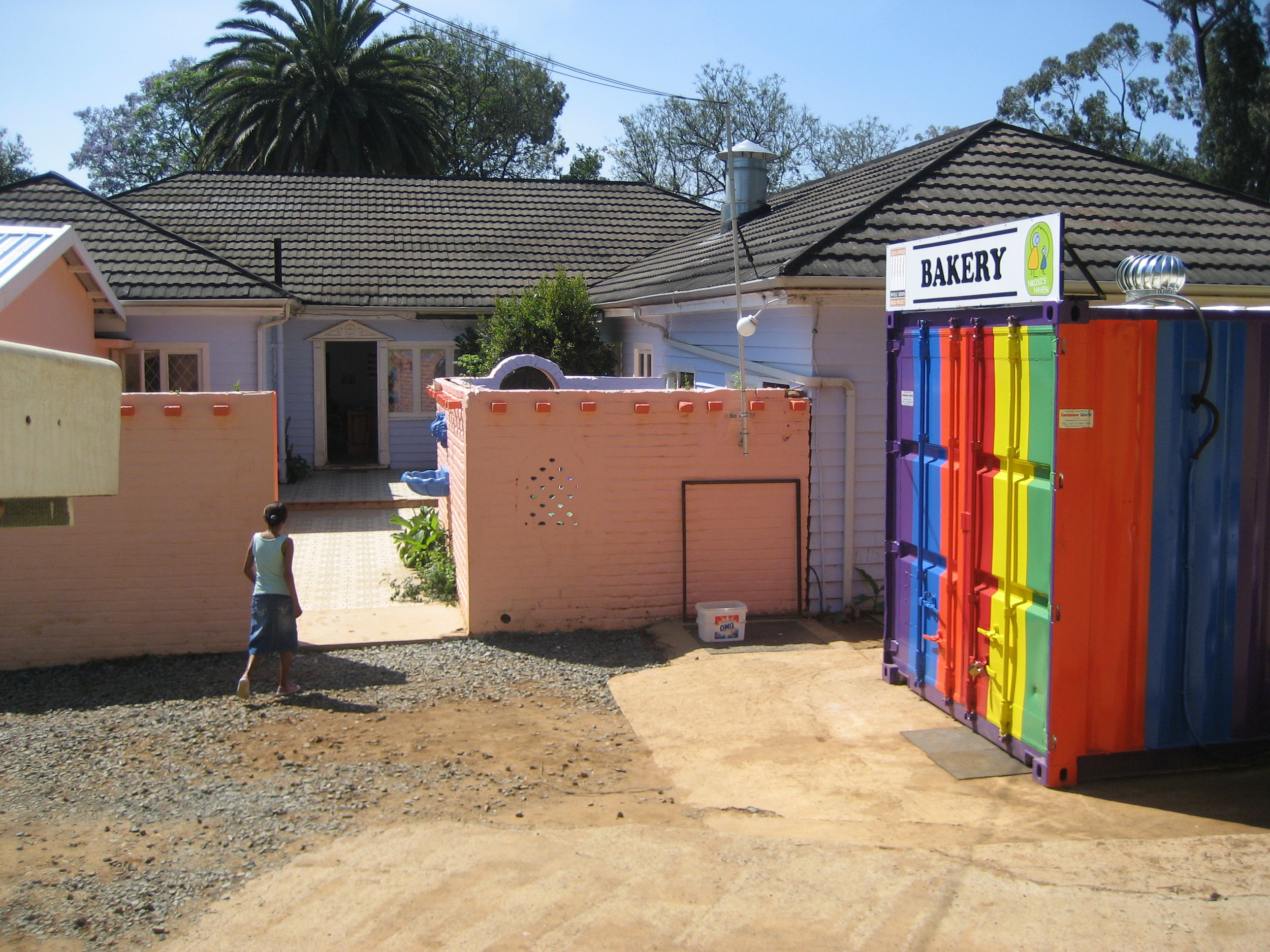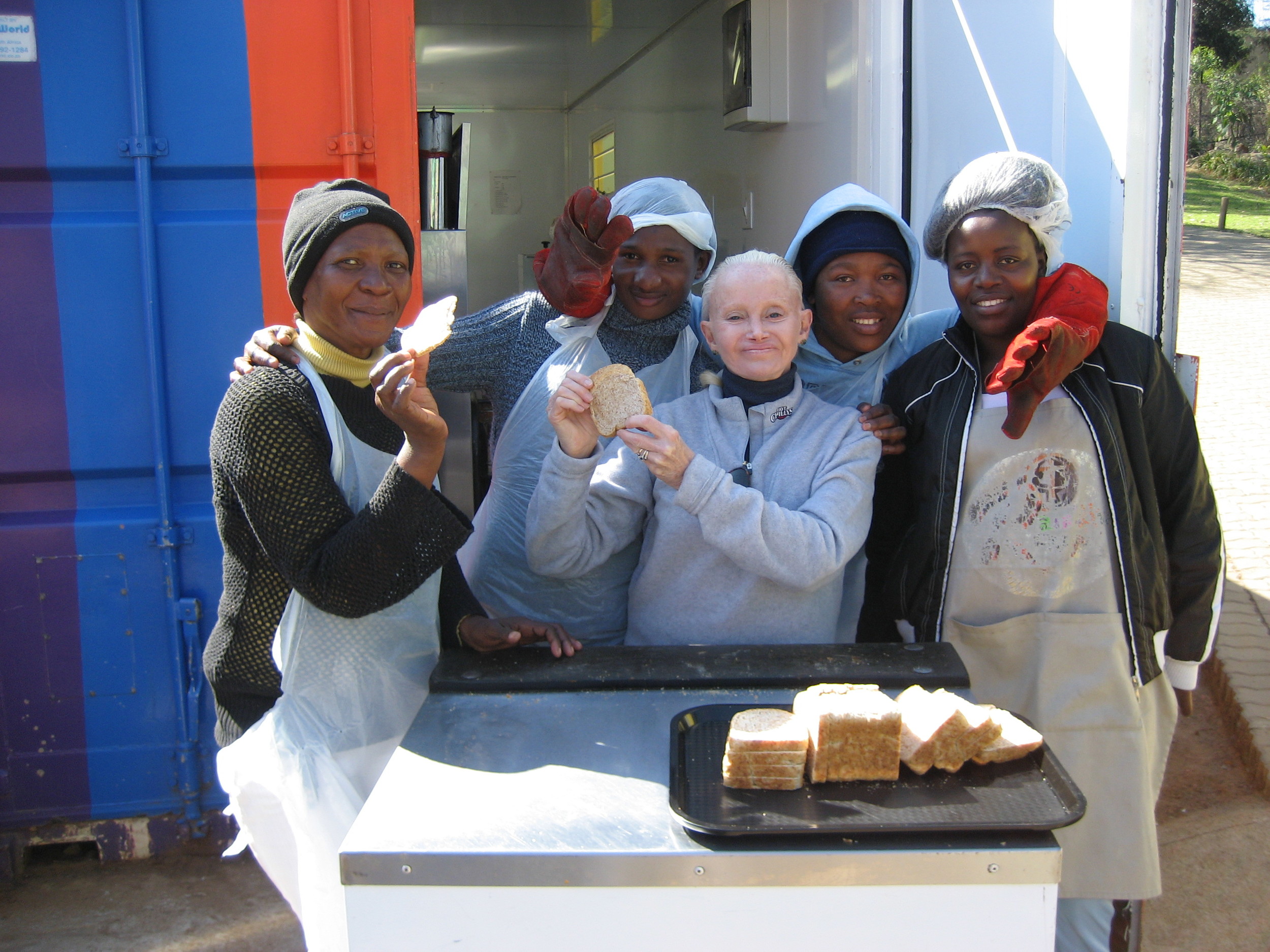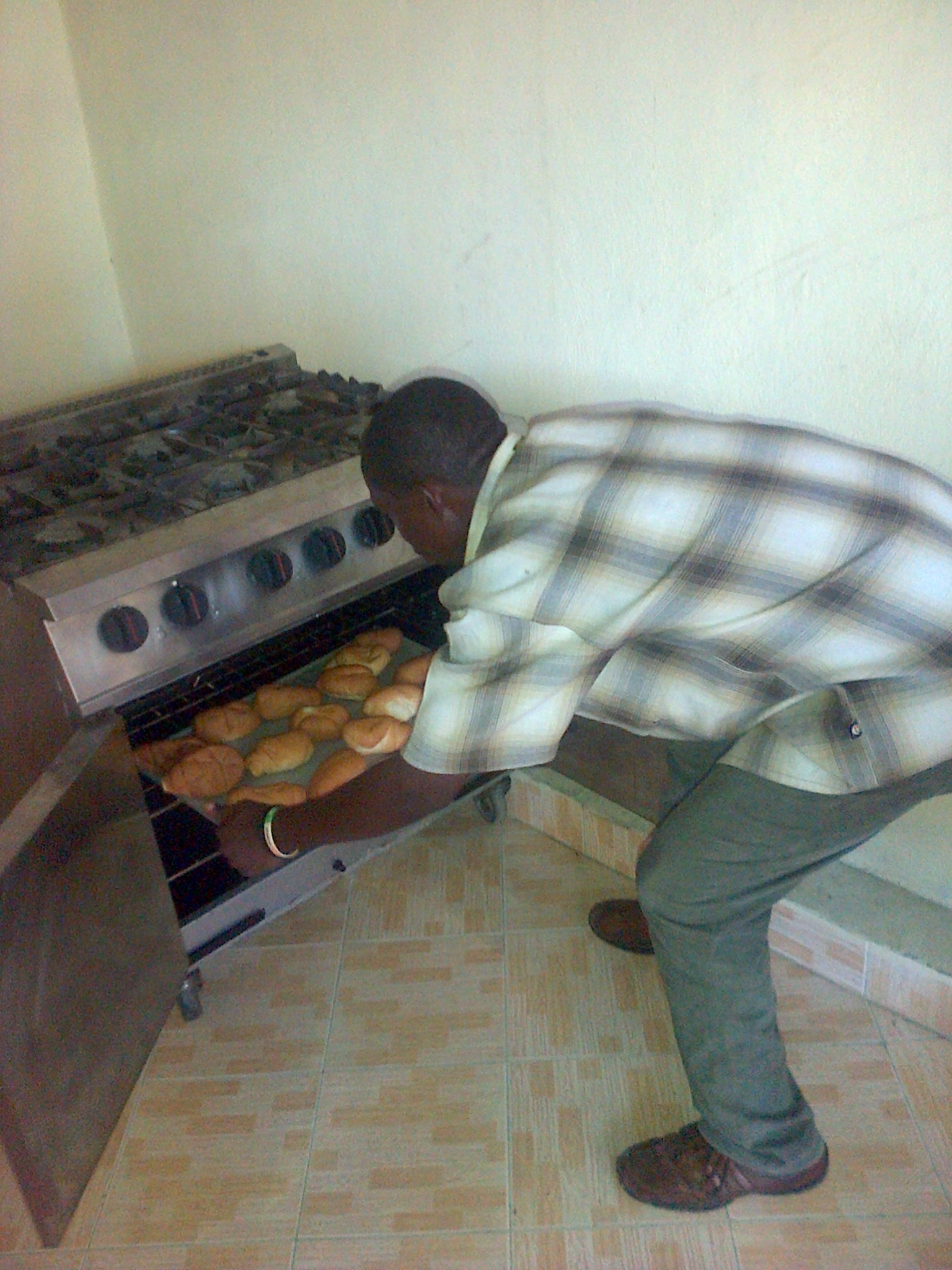“Without sustainability these projects fall by the wayside with very little overall impact.”
In the mid 1990’s my wife and I went to Kenya on a photographic safari. I was interested in indigenous cultures and I convinced our guide, Irene Mugambe, to take us to a very isolated Samburu village. The Samburu are a primitive nomadic tribe still living in their traditional way. It was a unique experience. We felt as if we were in a National Geographic special. As we were getting into the vans to leave, the chief brought a sick child to Irene.
Westerners almost never went to this village. Irene had convinced the chief to allow us to visit by telling him that I was a famous doctor from New York. She had been very specific. I was not there to treat patients. The hope was that by seeing the village we would be motivated and help in the future. An argument ensued. I ended it.
Even though I had nothing, not even a stethoscope, I agreed to examine the child.
As part of my medical school curriculum we went out into the Mexican countryside and held clinics. We had minimal equipment and I learned how to use my senses as tools.
I put my ear close to the child’s back and listened. I felt his forehead. He let out a cry when I pushed on his belly. I finished my examination. Although I couldn’t be sure of the exact diagnosis, I knew he had a bad lung infection, dysentery and possibly malaria.
I traveled with antibiotics. They were back at our safari camp. The next day we returned with packets of powder made from emptying antibiotic capsules. That was for the infection. Irene would return in a few days with something for the malaria and dysentery. I hoped for the best.
Six months later I received a package in the mail. It was the chief’s spear. The same spear the chief had used many years before to kill a lion, his rite of passage. A lock of hair from the lion’s mane sat on the top of the leather casing enclosing the still sharp tip. I was incredibly honored.
Kevin Cahill is one of the world’s foremost infectious disease specialists and is someone who has done much to try to improve conditions in the third world. I proudly told him the story. He was less then impressed.
“So Neil what do you think you accomplished?” I was taken back.
He went on to talk about the conditions causing the illness and the need to deal with them at the same time. He ended the conversation with these words:
“Without sustainability these projects fall by the wayside with very little overall impact.”
It was an important lesson for me to learn. I continued to go back to that village for the next three years. Irene was able to get the government to commit a nurse once a month and we created a small clinic.
The US Embassy bombings in Kenya and Tanzania in 1997 was the first time the world heard about Al Qaeda. My friends in Kenya contacted me. Scores of locals were hurt and nobody seemed to care. They didn’t have life threatening injuries, but they bore the physical scars of the terrorist attack.
I teamed up with AMREF, a large Kenyan NGO, in a mission of mercy. I organized a team of anesthesiologists and with an international team of reconstructive surgeons we went to Nairobi hospital.
It wasn’t easy. The hospital was a very large public facility with limited services. Fortunately we were able to secure donations and we brought everything we needed. In two weeks, we operated on over 300 people. The mission was a big success.
Doctors tackle scars of Nairobi blast
by Jan Fisher, New York Times, February 1999.
Ms. Gucuku, 27, was somehow composed enough to talk as a doctor dug two incisions the shape of the letter W into her forehead. She winced. The anesthetic was not working well.
But it seemed worth the pain. The doctor was a plastic surgeon smoothing down two bulbous scars, evidence in flesh of the bomb blast that killed more than 200 people on Aug. 7 and wounded 5,000 others.
When terrorists destroyed the United States Embassy here, doctors worked around the clock for three straight days. They had no time to worry about being neat. But this month a team of plastic surgeons - Kenyans, Americans and Spaniards, along with a crew of anesthesiologists from New York and New Jersey - have been going beyond these life-saving efforts, hoping to erase the physical scars from some 350 survivors.
The emotional scars are a different matter. But the surgeons hope that lessening some of the surface wounds might open the way to a deeper healing.
“We are going to try to bring you back to where you were” Dr Meshach Omguti, the chief of plastic surgery at Jomo Kenyatta National Hospital, assured Ms Gicuku as he began to stitch up her forehead. A secretary, her face and chest were blasted with glass from her office window.
“She will never forget the day the bomb blast occured” he said. “It changed lives. But this helps”.
Mary Lou Furnas, a surgical technician from Orange, Calif., whose husband, David, put together the team of four American surgeons, said: “We’re doing more than repairing scars. We’re giving them an ego boost, a psychological boost.”.
Plastic surgery may not seem like the first concern for bombing victim scar. But soon after the bombing a group of doctors from the African Medical and Research Foundation decided that hundreds of people would need reconstructive surgery, some of it cosmetic and some of it a medical necessity. The foundation runs East African Flying Doctors Services, a group of surgeons who travel to rural areas fixing problems like cleft palates.
The group raised money and recruited six foreign surgeons and eight anesthesiologists and technicians, all of whom donated their time and most of whom had experience working in poor parts of the world (The United States Government gave half a million dollars to the program; British Airways donated air fare; Kenyatta hospital supplied some staff members and operating rooms, and various drug and equipment companies gave ten of thousands of dollars in medicine and machines).
Dr. Neil Ratner, for example, a 49-year-old anesthesiologist from Manhattan, has made several medical trips to a village in northern Kenya, and so jumped at the chance to head up the anesthesiology team these past weeks. Seeing patient after patient - blinded, deaf, riddled with shrapnel - made him realize just how destructive the bomb was.
“We all felt badly before” Dr. Ratner said. “But when you see all the scars and tragedy, you see that there are human beings involved and it’s not just a sound bite.”
Each doctor operated on half a dozen or more people a day. Much of the work has been picking out pieces of glass, some the size of silver dollars, from the victims’ bodies.
As she lay on an operating table, Millicent Maina, 37, described how two pieces of glass in her right knee sometimes made her feel as if flies were creeping over her. At other times it sent pain up her leg.
Dr. Furnas, who teaches at the University of California at Irvine, cut both pieces out.
There were far more serious cases, like those of two patients who by coincidence also have the last name Maina and share a first name as well, David.
The younger David Maina is 13, and had been sitting on a bus across the street from the embassy when the bomb went off. His jaw was nearly ripped off, and despite an earlier operation his mouth could barely close.
This month, Dr. Furnas, 67, who is tall and white-haired and looks exactly like a surgeon should, grafted some skin from David’s groin onto his face, tightening his mouth, smoothing out some scars and setting a stage for later operation that will rebuild the bones of his jaw. He said he felt better, but five days after the operation, it would be too much to say he felt good.
“There is some pain here” he said.
The other David Maina is a 55-year-old cab driver who was standing next to his Mercedes when the bomb went off, taking off an ear and burning big patches of his scalp and chest.
The work on Mr. Maina was extensive: surgeons implanted what amount to a balloon under his scalp to stretch the skin so it ultimately can be sewn up over his head scars.
But his own wish for the operation was more basic. He wanted his ear reshaped so it would once again support his glasses.
“It’s better now,” he said, and the operation has been one of the few bright spots since the blast: he has not been able to work or pay rent and, half blind, he cannot drive a cab again.
“This blast has destroyed me completely,” he said. “Even the car I was using had a loan on it”.
In the women’s ward, Patricia Ouko, a 50-year-old mother of seven children, said life had been hard since the explosion, when the window beside which she was typing exploded and sent glass shrapnel nto her forehead. She is filled sometimes with “bad memories”.
“Sometimes you wake during the sleep without knowing why,” she said.
Though her head is still bandages, she said she was happy with the operation and invited a visitor to look in her file at a photograph of the dark marks on her brow. It would all be different, she said, when the bandage came off.
“At least,” she said, “I won’t hear any remarks about my face.”.
Dear Dr. Ratner,
I read the amazing story in yesterday’s NY Times about you and other the other doctors who volunteered their services to help rehabilitate the many victors of the bomb blast in Nairobi on Aug 7, 1998.
It is difficult to find adequate words to express my admiration and respect for your dedication, efforts and zeal. You have undoubtedly earned the ever-lasting gratitude of your patients for restoring some degree of normality in their lives and hope for the future.
All the best!
Sincerely yours,
William Shulman
108-50 71 Ave.
Forest Hills, NYC 11375
Over the years I had the great pleasure of spending time with Nelson Mandela. I told him of my charity work in east Africa. He asked me to come and do something for the people in his country. I promised I would.
Neil with Nelson Mandela.
In 2005 I moved to Woodstock, New York. I read an article about a local baker that had been to South Africa. He was moved by both the extreme poverty and the HIV crisis. Together, he, my wife and I formed International Community Bakeries. The purpose:
Community based, community supported, self-sustaining micro bakeries which produce fresh, high quality, healthy breads.
Nkosi’s Haven Village is a program for HIV positive single moms and their kids in South Africa. We couldn’t think of a more deserving program for our first bakery. Mandela himself even helped. When he heard about our project, he sent four of his official coffee table books with a message.
“Doctor, auction these books off at your fundraiser for the bakery. I will endorse them any way the buyer would like.”
We opened Nkosi’s Bakery on World Aids Day, December 1 2009. The bakery is thriving and there are plans for a second location at a satellite farm a few miles away.
Shortly after opening Nkosi’s, we began work on another bakery. Two NGO’s, The Colette Foundation and Off The Matt Into The World teamed up to provide the funds for Rosie’s bakery. It is located in an orphanage in the township of Khayelitsha just outside of Cape Town. Khayelitsha is one of the poorest townships in South Africa. We opened in February 2011. At present the bakery is not only providing bread to the residents of the orphanage but has expanded to sell to other NGO’s in the area.
With an Irish charity named Soul Of Haiti, ICB opened its third bakery in 2013. Saint Martin is one of the poorest, most dangerous neighborhoods in Port Au Prince Haiti. We overcame problems of limited electricity, no sanitation and no running water. Our local baker Grandoit, has been very successful and he has expanded beyond the small facility we provided. Plans are in the works for more bakeries in the rural southern part of the country.
Learn more about International Community Bakeries at http://internationalcommunitybakeries.org/



























